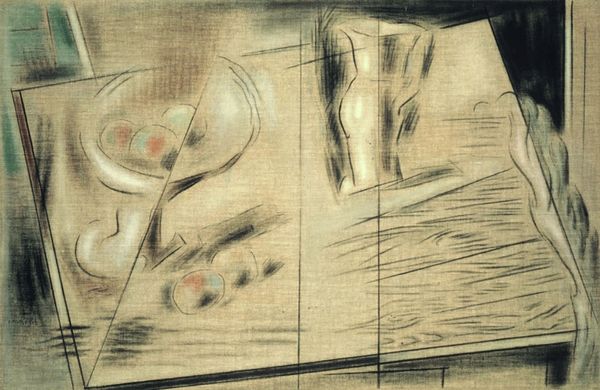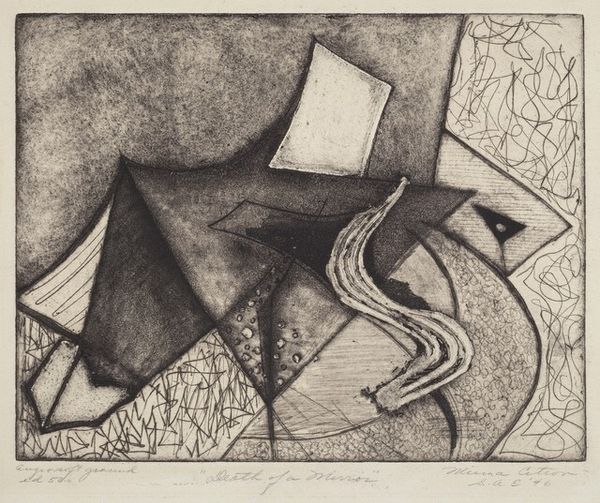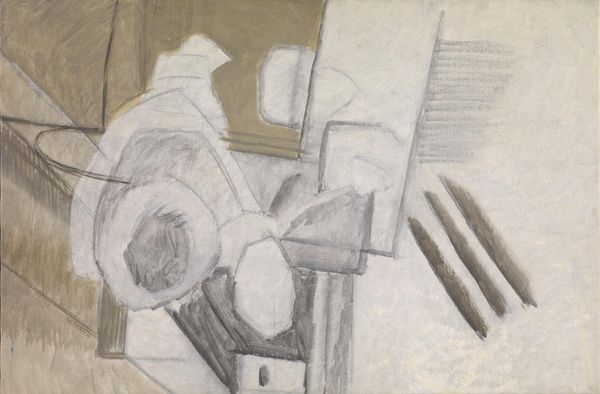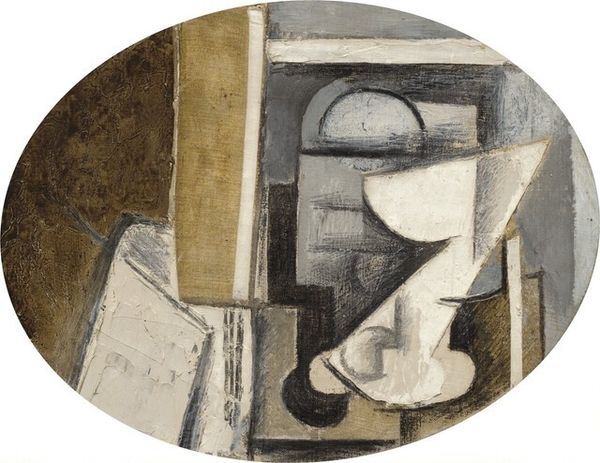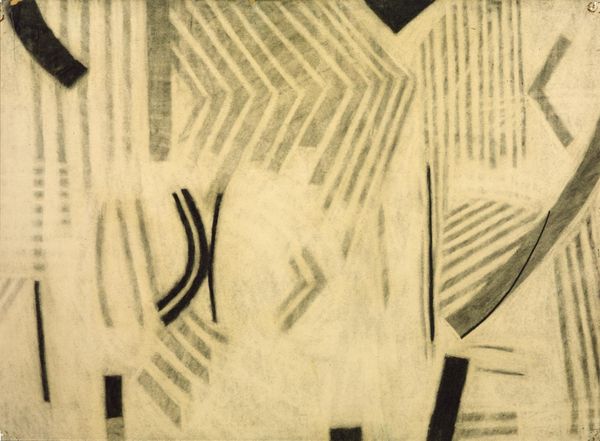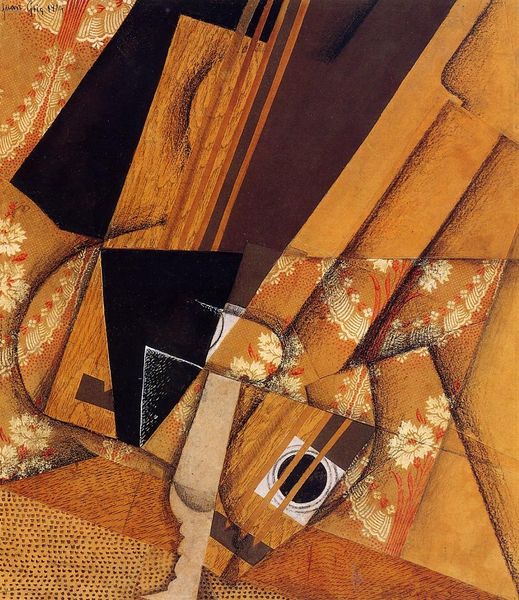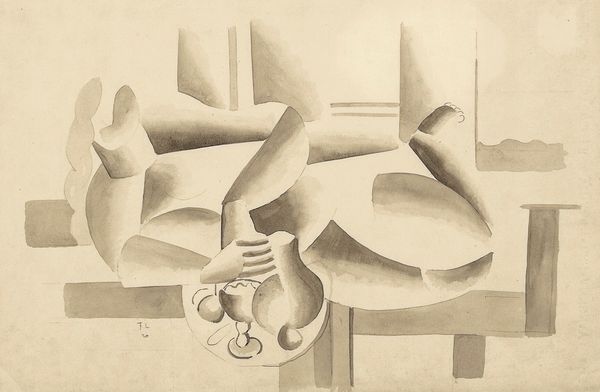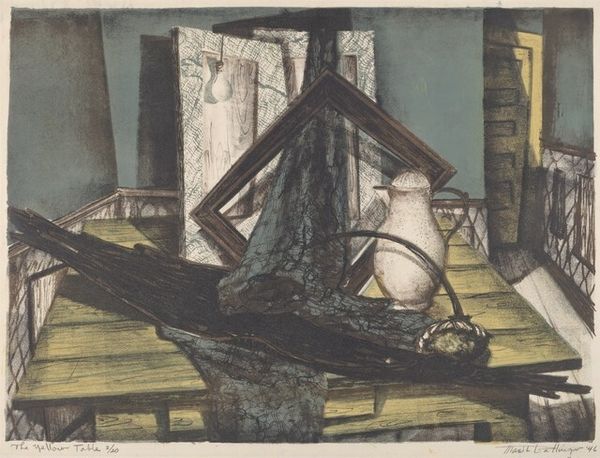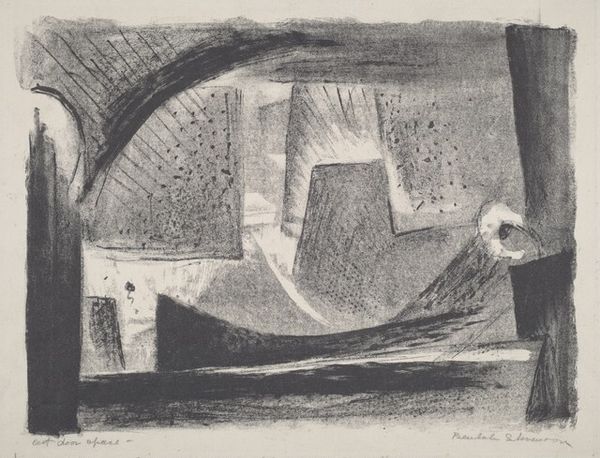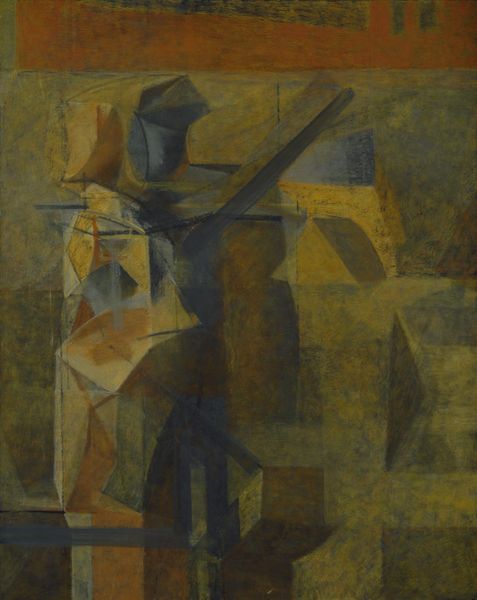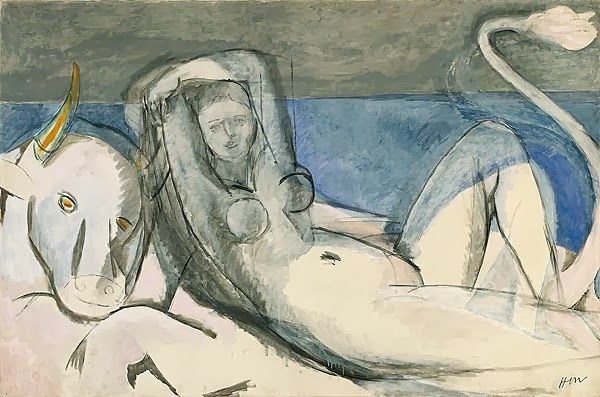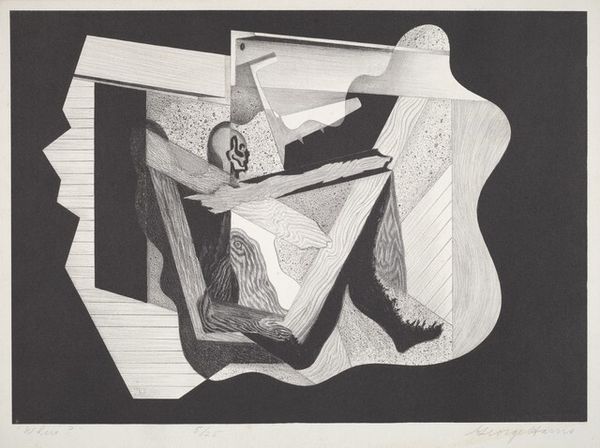
drawing, charcoal
#
portrait
#
drawing
#
figuration
#
charcoal
#
surrealism
#
modernism
Copyright: Modern Artists: Artvee
Curator: This is "La reine Salomé" by Salvador Dalí, created in 1937 using charcoal. Look at how he manages to create this stark composition through a limited tonal range! Editor: My gut reaction is... claustrophobia. Those severe lines, the restricted palette—it's like peering into a beautifully rendered, emotionally airless tomb. And those strangely placed rods piercing the figures, it feels violent. Curator: Dalí’s interest in Salome goes beyond just a historical depiction, right? Salome, traditionally depicted as a seductress linked to a grisly beheading, can be understood as a symbol for a nexus of power, desire, and fear of castration. The drawing also features dreamlike imagery, almost disjointed in nature, adding to that eerie atmosphere. Editor: Absolutely. And the oversized head on the left...it's almost cartoonish, in a nightmarish way. Is it Holofernes, forever detached, judged and set apart from the sensual allure of Salome? Those accusing features look grotesque in their isolation. Dalí is amplifying the power dynamics. Curator: I agree. Also, notice how the rods intersect both figures but ultimately, almost pin them to the picture plane—Dalí uses visual cues to underscore his anxieties around Freudian psycho-sexual theory. It suggests inescapable forces. Editor: Right. The female figure looks both defiant, almost haughty, and trapped—an unsettling duality, a dance of desire and dread in the face of death. And what’s that landscape fragment framed like a window? It’s small, isolated. Like a fading memory. Curator: I feel the external environment speaks to the imprisonment within Salome's own story. The small landscape symbolizes an inaccessible freedom. It is that one detail which anchors the entire piece in Dalí’s deeper psycho-sexual themes. The title indicates Salome as a symbol. Editor: I find that landscape, paired with the architectural, claustrophobic lines, intensifies this oppressive experience, it speaks to both personal restriction and emotional limitation. The geometry in this composition isn’t just aesthetic, it is emotional. The scene is more emotional torture than anything celebratory. Curator: Indeed. Through symbolic language, the genius of the piece evokes strong feelings about repressed emotion and desires. Editor: Well, that's certainly given me a lot to think about, it is never just a portrait but an entire mood. Thank you.
Comments
No comments
Be the first to comment and join the conversation on the ultimate creative platform.
